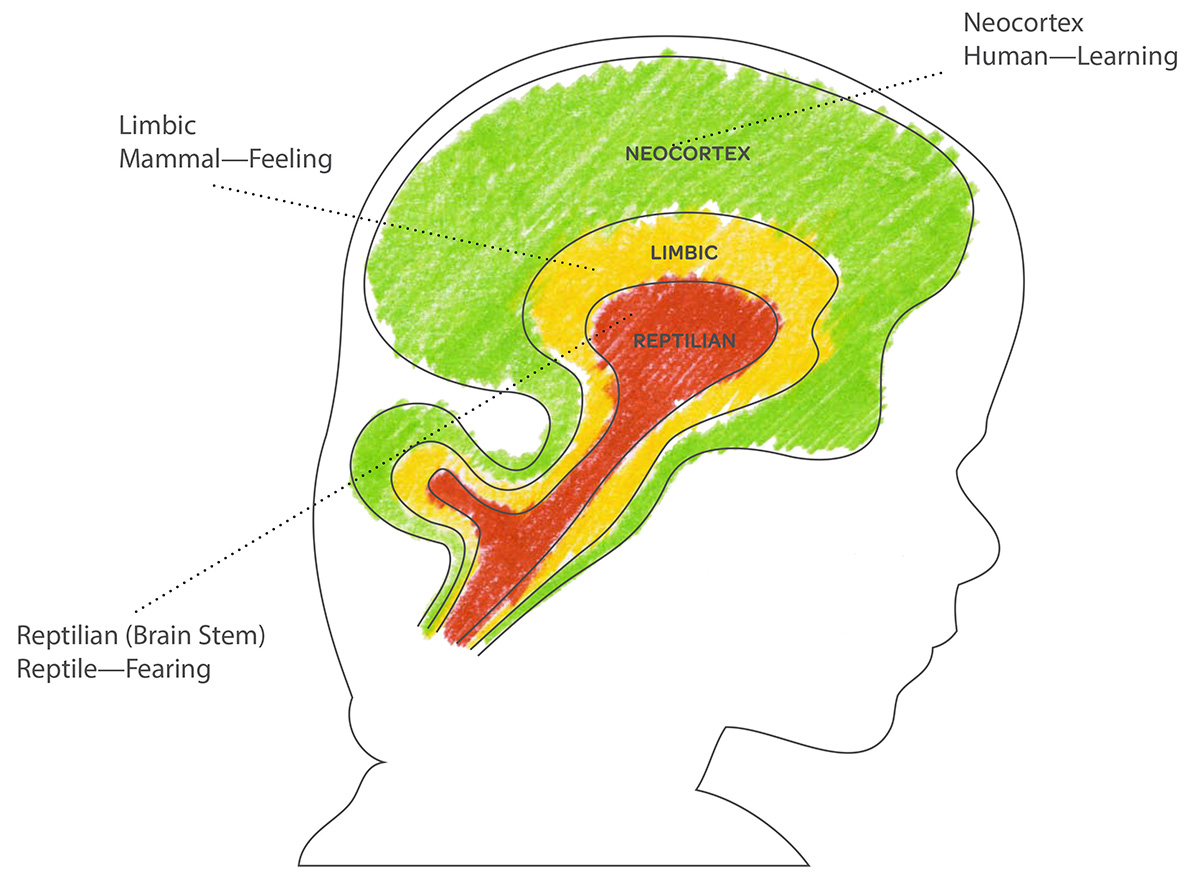
By Jaci Foged, Extension Educator
Why is it important to understand early brain development? As parents and childcare providers, knowing information about early brain development will help you understand young children’s development and how best to nurture their growth. Understanding early brain development is also helpful because it provides information for how the brain plays an important role in behavior.
The first 3 years of brain development are particularly sensitive to the nurture and care young children receive. This sensitive period is when a particular part of the brain is growing and developing the most. What is really cool about the brain is that it grows and changes throughout our lifetime.
HOW DOES THE BRAIN DEVELOP?
At birth, an infant has 100–200 billion neurons (brain cells), but not many connections. Neurons send electrical signals to communicate with each other. These connections form circuits, which become the basic foundation of brain architecture. What we use gets stronger, what we do not use, we lose — this is known as pruning. The process of pruning may sound alarming but it is actually helpful. Pruning streamlines neural processing which makes the remaining connections and circuits work more efficiently.
Brains develop from the bottom up, starting with the brainstem (reptilian), then moving up and to the front of the brain (the neocortex). Our brainstems control those involuntary things we do not think about, such as breathing, heartbeat and body temperature. The limbic area of the brain controls our feelings and emotions. The cortex controls our ability to think, talk and play.
WHAT DOES THIS LOOK LIKE?
Picture these scenarios:
• Refer to graphic: in the red (brain stem) — a toddler is in mid tantrum because they dropped their snow cone in the dirt and now they cannot eat it. This child is currently working from their brainstem. Simply, they are in survival mode. You might see behaviors such as kicking, screaming and possibly an all-out tantrum laying on the ground pounding their tiny fists. This would not be the best time to teach the toddler how to clean-up. Instead, stop and comfort this child. When a child is reacting from their brainstem, you want to acknowledge their feelings and connect. You may say something like, “You are feeling sad because you were enjoying your snow cone and it dropped on the ground.”
• Refer to graphic: in the yellow (limbic) — a preschooler might be crying or whining because their new at your school and their parent just dropped them off for their first day. This child is operating in their limbic system. As a provider, you should try to connect with and reflect with this child. Stay and play with them, they need you to provide comfort and help them feel safe and secure.
• Refer to graphic: in the green (neocortex) — an infant is sitting up on the floor with blocks in front of them. They appear to be happy and content. This child is operating in their cortex. Talk with them about what you are doing as you stack up the blocks. Talk to the infant about what you see them doing too! Language, physical and social development are learned through play and interacting with others. Help them make discoveries about how the world works!
EARLY EXPERIENCE MATTER
Our brains are a social organ. Being present with young children, playing with them, cuddling with them, using eye contact and talking with children encourages healthy brain development. Be aware which part of the brain the child is working in before you respond.
HOW CAN YOU HELP YOUR BABY DEVELOP HEALTHY BRAIN CONNECTIONS?
The Zero to Three: National Center for Infants, Toddlers, and Families shares the following insights in a video, “Magic of Everyday Moments: Brain Wonders” at https://www.zerotothree.org/espanol/brain-development.
• Responsive care — tune into their signals, words, facial expressions and actions.
• See your child as a partner in your interactions. Think of it as a game of catch. They throw the first pitch, and you take it and throw it back. If your infant puts a block on top of another — talk about it, use facial expressions and ask them if they can add another. If you have an older infant or a young toddler, start to count the blocks they have stacked. Ask them what comes next. Ask them to tell you what they are doing.
• A little stress goes a long way to building a strong brain. Be there to support your child, let them know they can depend on you. Mastering new challenges builds brain power and motivation to learn.
WHAT IS IMPORTANT TO REMEMBER?
• Children learn best when they feel safe and secure.
• Babies build their neuronal connections in their day-to-day interactions. The more they repeat something, the stronger their connection becomes.
• There are sensitive periods in brain development to assist with learning skills, but there are always opportunities to learn even into adulthood.
• Good nutrition helps support brain growth.
FOR MORE INFORMATION
Nebraska Extension NebGuide, Brain Development and Learning in the Primary Years (G2198), is online at http://extensionpublications.unl.edu/assets/pdf/g2198.pdf.